Unboxing Making

What are some common mistakes to avoid when making an unboxing video ?
Unboxing videos are a popular way for consumers to get a closer look at products before making a purchase. However, there are some common mistakes that content creators should avoid when making these videos. These include lack of preparation such as not researching the product and inadequate lighting and sound quality. Additionally, focusing too much on packaging and ignoring the unboxing experience can also be detrimental. Neglecting post-production editing can result in inconsistent video quality and ineffective editing techniques. By avoiding these mistakes, content creators can create engaging and informative unboxing videos that resonate with their audience.

What equipment do I need to start making unboxing videos ?
To start making unboxing videos, you'll need: 1. A camera or smartphone with at least 1080p resolution, image stabilization, and manual settings for clear, stable footage. 2. A tripod or gimbal to ensure steady shots and easy adjustments. 3. A microphone that provides clear audio and is easily connectable to your recording device. 4. Lighting equipment like softboxes, LED ring lights, and reflectors for even illumination. 5. A simple, clean background that is consistent across videos for brand recognition. 6. User-friendly editing software with features like color correction and audio mixing. 7. Extra accessories such as high-speed memory cards, spare batteries, and lens cleaning kits. 8. Props and tools for unboxing, including a letter opener, gloves, and measurement tools. Remember, while having the right equipment is crucial, your creativity, presentation skills, and consistency in publishing content are also key factors in the success of your unboxing channel.

How long should my unboxing videos be ?
This article discusses the importance of video length for unboxing videos, considering factors like audience attention span, product complexity, and platform requirements. It suggests best practices for creating engaging unboxing videos, including capturing viewers' interest, showcasing features, providing realistic feedback, and addressing pain points. The article also offers tips for keeping videos engaging, such as using visual aids, maintaining consistency, and encouraging audience engagement.

What are some tips for filming a successful unboxing video ?
Unboxing videos have become increasingly popular in recent years, with viewers tuning in to see the latest products being unveiled and reviewed. If you're looking to create a successful unboxing video, here are some tips to help you get started: 1\. Choose the Right Product - Research Popular Products: Look for products that are currently trending or highly anticipated by consumers. This will increase the likelihood of your video being watched and shared. - Consider Your Audience: Think about who your target audience is and what products they would be interested in seeing unboxed. This will help you choose a product that resonates with them. 2\. Set Up Your Shooting Space - Find a Well-Lit Area: Natural lighting is ideal, but if that's not possible, make sure to set up additional lighting sources to avoid any shadows or dark areas in your footage. - Clear the Background: Remove any clutter from the background to keep the focus on the unboxing process. A clean, simple background will also make your video look more professional. 3\. Use Quality Equipment - Invest in Good Camera: A high-quality camera will produce clearer, sharper images, making your video more enjoyable to watch. - Use a Tripod or Gimbal: To stabilize your shots, use a tripod or gimbal to eliminate shaky footage and keep your camera steady throughout the unboxing process. 4\. Plan Your Shots - Create a Shot List: Plan out each shot you want to capture during the unboxing process, including close-ups of the product and its features. This will help you stay organized and ensure that you don't miss any important details. - Vary Your Angles: Incorporate different angles and perspectives into your shots to keep things interesting for your viewers. For example, you could start with a wide shot of the entire package, then move in for closer shots of specific details. 5\. Keep It Short and Sweet - Focus on Key Points: Don't spend too much time on unnecessary details or long introductions. Instead, focus on showcasing the product and its features in an engaging way. - Edit Your Footage: After filming, take some time to edit your footage together into a cohesive video. Cut out any unnecessary parts and add transitions between shots to make it flow smoothly. 6\. Engage with Your Audience - Add Commentary: As you unbox the product, provide commentary on what you're seeing and how it feels. Share your thoughts on the product's design, functionality, and overall quality. - Encourage Interaction: Ask questions or encourage viewers to leave comments about their experiences with similar products. This will help build a sense of community around your video and increase engagement.
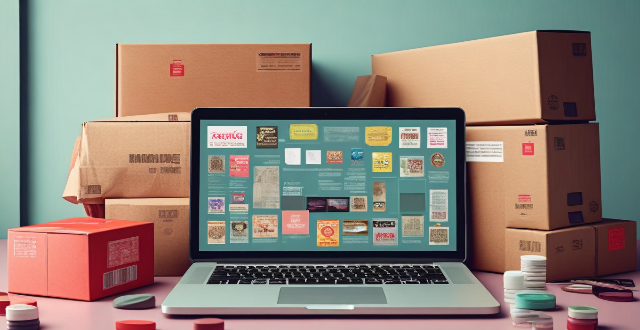
What is the best way to create an engaging unboxing video ?
Unboxing videos are a popular trend in product reviews and demonstrations, offering viewers a firsthand look at a product, its packaging, and the unboxing experience. To create an engaging unboxing video, it's important to plan your content, choose the right equipment, set the scene, start with a bang, showcase the product, share your thoughts, keep it short and sweet, and end with a call-to-action. By following these tips, you can produce a compelling video that showcases your product in an exciting and informative way.

How do I make my unboxing videos stand out from others ?
Unboxing videos have become a popular trend in the digital world, with millions of viewers tuning in to watch their favorite influencers unveil new products. However, with so many unboxing videos available online, it can be challenging to make yours stand out from the crowd. In this article, we will discuss some tips and tricks to help you create unique and engaging unboxing videos that will capture your audience's attention. ### 1\. Plan Your Content Before you start shooting your unboxing video, it's essential to plan your content carefully. Here are some things to consider: - **Choose the Right Product**: Select a product that is interesting and relevant to your audience. It could be something new or highly anticipated, or even a product that has received mixed reviews. - **Research the Product**: Familiarize yourself with the product's features, specifications, and benefits. This will help you create a more informative and engaging video. - **Create an Outline**: Jot down the key points you want to cover in your video, such as the packaging design, product features, pros and cons, and your personal opinion. ### 2\. Set Up Your Shooting Space The setting of your unboxing video can play a significant role in its overall appeal. Here are some tips for setting up your shooting space: - **Choose a Well-Lit Area**: Ensure that your shooting space is well-lit to produce high-quality footage. Natural light is always a good option, but if that's not possible, invest in some good lighting equipment. - **Keep the Background Simple**: A cluttered background can be distracting for your viewers. Keep your shooting space clean and simple, with minimal distractions. - **Use a Stable Surface**: Place your product on a stable surface to avoid any shaky footage during the unboxing process. ### 3\. Use High-Quality Equipment Using high-quality equipment can significantly improve the overall quality of your unboxing video. Here are some essential items to consider: - **Camera**: Invest in a good quality camera or smartphone with a high-resolution lens. This will ensure that your footage is crisp and clear. - **Microphone**: Good audio quality is crucial for keeping your viewers engaged. Use an external microphone or ensure that your built-in microphone is of good quality. - **Tripod/Gimbal**: To avoid shaky footage, use a tripod or gimbal to stabilize your camera during the shoot. ### 4\. Add Personal Touches Personal touches can help make your unboxing video more relatable and engaging for your audience. Here are some ideas: - **Introduce Yourself**: Start by introducing yourself and telling your viewers why you chose this particular product. - **Share Your Thoughts**: Share your thoughts and opinions about the product as you unbox it. This will make your video more interactive and engaging. - **Involve Your Audience**: Ask your viewers for their opinions on the product or encourage them to share their experiences in the comments section. ### 5\. Edit Your Video Professionally Editing is an essential part of creating a compelling unboxing video. Here are some tips for editing your video professionally: - **Trim and Cut**: Remove any unnecessary parts of the video that don't add value to the content. - **Add Text and Graphics**: Include text overlays and graphics to highlight key points and make your video more visually appealing. - **Use Transitions**: Add smooth transitions between different scenes to make your video flow seamlessly. - **Include B-Roll Footage**: Incorporate additional footage, such as product demonstrations or behind-the-scenes clips, to make your video more engaging. ### 6\. Promote Your Video Effectively Once you've created your unboxing video, it's time to promote it effectively to reach a wider audience. Here are some promotional strategies: - **Optimize Your Video Title and Description**: Use relevant keywords in your video title and description to improve its searchability on YouTube and other platforms. - **Share on Social Media**: Share your unboxing video on your social media channels, such as Instagram, Facebook, and Twitter, to reach a broader audience. - **Collaborate with Other Influencers**: Partner with other influencers in your niche to cross-promote each other's content and expand your reach.

How often should I release new unboxing videos ?
Unboxing videos have become a popular genre on social media platforms, especially for tech enthusiasts and consumers who want to see the latest gadgets in action. As an unboxing video creator, you may be wondering how often you should release new videos to keep your audience engaged and growing. Here are some factors to consider: - Audience Demand: Listen to your audience's feedback and analyze engagement metrics to determine if they want more frequent content. - Product Release Cycles: Align your schedule with product release cycles, such as monthly smartphone releases or seasonal products like holiday toys. - Content Quality vs. Quantity: Maintain high-quality content by investing time in good lighting, clear audio, and thorough explanations of the products you're unboxing. Don't sacrifice quality for quantity. - Consistency: Set a consistent schedule for releasing videos, such as weekly or bi-weekly, and communicate this schedule to your audience through social media posts, email newsletters, or at the end of each video. - Personal Capacity: Consider how much time and resources you can realistically dedicate to creating and editing videos. It's better to set a manageable schedule than to burn out by trying to do too much. - Competitive Landscape: Look at what other unboxing channels are doing and find ways to differentiate your content from others in the market. Maybe it's through humor, in-depth analysis, or focusing on niche products. There is no one-size-fits-all answer to how often you should release new unboxing videos. The key is to find a balance that works for you and your audience while maintaining quality and sustainability over time. By considering these factors, you can develop a strategy that keeps your viewers coming back for more.
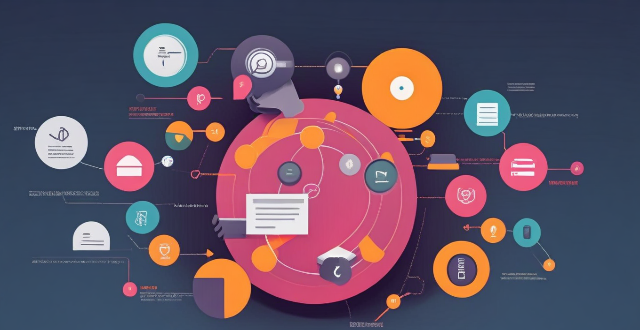
What are the benefits of creating unboxing videos for my business ?
Unboxing videos offer a unique marketing opportunity for businesses to showcase products authentically and engagingly, increasing brand awareness, enhancing customer trust, improving conversion rates, providing cost-effective marketing, and giving a competitive edge.

How can I monetize my unboxing videos ?
This comprehensive guide offers various strategies for monetizing unboxing videos, such as earning through advertising revenue, sponsored content, selling merchandise, crowdfunding, and licensing content. It emphasizes the importance of consistency, audience engagement, and content quality to attract viewers and potential revenue streams.

How can I promote my unboxing videos on social media ?
To effectively promote unboxing videos on social media, optimize the video content for high quality and SEO, share across multiple platforms like YouTube, Instagram, Facebook, Twitter, and TikTok. Engaging with the audience through comments, giveaways, and collaborations can build a community. Paid advertising and analyzing performance can also boost visibility. Consistency and quality are crucial for online success.

How does the threat of climate change influence our cognitive processes and decision-making ?
The influence of climate change threat on cognitive processes and decision-making is significant. It can affect perception of risk, trigger emotional responses, and alter information processing. Additionally, it shifts priorities in decision-making, necessitates long-term planning, and requires collaboration among various stakeholders.
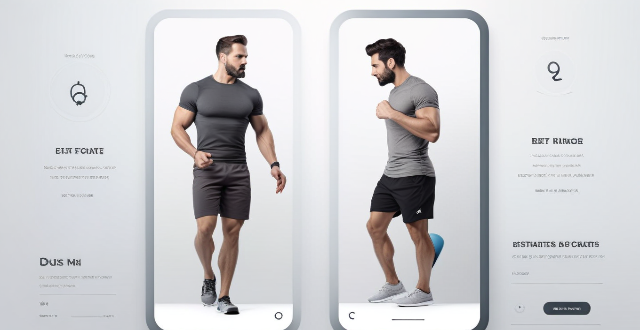
Can you provide a step-by-step guide for making bread at home ?
This step-by-step guide provides a comprehensive process for making bread at home, detailing the ingredients and tools required, as well as each stage of the bread-making process from proofing the yeast to baking. It emphasizes the importance of technique in kneading and rising, offers optional tips for enhancing texture, and concludes with instructions on how to bake and enjoy the homemade bread.

Can AI replace human decision-making in complex situations ?
Artificial intelligence (AI) has made significant strides in recent years, leading to discussions about its potential to replace human decision-making in complex situations. While AI possesses certain advantages, such as speed and accuracy, it still faces limitations that prevent it from fully replacing humans in decision-making processes. Advantages of AI in decision-making include speed and efficiency, accuracy and consistency, and scalability. However, AI also has limitations such as lack of creativity, ethical considerations, and interpretability. Examples of complex situations where AI may not replace human decision-making include medical diagnosis, legal judgments, and business strategy. In conclusion, while AI has the potential to assist humans in decision-making processes, it cannot fully replace them in complex situations. The combination of AI's analytical capabilities and human creativity, ethics, and intuition will likely lead to better outcomes in these scenarios.

Can climate information sharing lead to better policy making ?
Climate change is a pressing issue that requires informed policymaking. Climate information sharing can improve decision-making, collaboration, and transparency in the policy process. However, challenges such as data quality, accessibility, and coordination must be addressed to ensure effective information sharing. Overcoming these challenges can lead to better policies that address climate change.

How can we promote gender equality in climate policy making ?
Promoting gender equality in climate policy making is crucial for ensuring inclusive policies that address the needs of all genders and harness the potential of everyone in combating climate change. Key strategies include ensuring equal representation of men and women at all levels of decision-making, addressing gender-specific impacts of climate change, promoting education and training, collaborating with women's organizations, and creating safe spaces for open expression. By implementing these measures, we can move towards more effective and equitable solutions to tackle climate change.

What role should public opinion play in climate decision-making ?
The text discusses the importance of public opinion in climate decision-making, emphasizing that it can influence policymakers, shape public discourse, and drive action towards addressing climate change. The author outlines ways to influence public opinion, such as education, advocacy, media, and personal action.

How does climate change exacerbate gender inequality in access to resources and decision-making ?
Climate change exacerbates gender inequality by disproportionately affecting women and girls in access to resources and decision-making. Women often have limited access to resources such as water, food, and land due to cultural norms, lack of education, and poverty. They also have limited participation in decision-making processes due to cultural norms and lack of education. To address these issues, it is important to prioritize gender equality in climate change adaptation and mitigation strategies by ensuring that women's voices and experiences are taken into account when making decisions.

How can I recreate authentic Sichuan flavors at home without making it too spicy ?
To recreate authentic Sichuan flavors at home without making it too spicy, focus on understanding key flavor components like Ma La (numbing spice), hot and spicy, and sweet and fragrant. Select ingredients carefully, using moderately hot chili peppers and Sichuan peppercorns sparingly. Incorporate aromatics like garlic, ginger, and doubanjiang. Utilize cooking techniques such as toasting peppercorns, controlling heat with a mix of chili forms, balancing flavors, and tasting as you cook to adjust seasoning. Try making a classic Sichuan dish like Kung Pao Chicken with these tips in mind to achieve an authentic taste without overwhelming spiciness.

How can we involve vulnerable populations in climate decision-making processes to protect their rights ?
The text discusses the importance of including vulnerable populations, such as the poor, elderly, children, and those with disabilities, in climate decision-making processes. It highlights the reasons for their inclusion, strategies to facilitate their participation, effective communication channels, policy recommendations, and success stories. The text emphasizes the need for accessibility, language support, child-friendly approaches, financial support, community workshops, door-to-door outreach, social media campaigns, and art and storytelling to reach out to these populations. It also suggests legal mandates, funding priorities, and monitoring and evaluation as policies to support inclusivity. Overall, the text argues that involving vulnerable populations in climate decision-making is crucial for equity, diversity of perspectives, and effective solutions.

How do climate model predictions differ from weather forecasts ?
Climate model predictions and weather forecasts differ in terms of time frame, purpose, methodology, accuracy, and impact on decision making, with the former focusing on long-term trends for policy-making and the latter offering short-term insights for daily activities.

What are some tips for finding authentic products on foreign shopping sites ?
When shopping on foreign sites, it's important to ensure that the products you're purchasing are authentic. Here are some tips to help you find genuine items: 1. Research the seller before making a purchase. 2. Check product images for high-quality and detail. 3. Read product descriptions carefully. 4. Look for proof of authenticity from the seller. 5. Use secure payment methods when making purchases online. 6. Be wary of extremely low prices compared to other sellers.

How can environmental ethics influence policy-making ?
Environmental ethics can play a significant role in shaping policies by raising awareness, promoting sustainable practices, encouraging public participation, and influencing international relations.

How do I know if a discount is really worth it during the discount season ?
During discount season, it's essential to critically evaluate sales to ensure you're getting a good deal. To determine if a discount is truly worth it, consider the original price by checking historical prices and comparing across retailers. Assess your need for the item by making a wishlist and considering long-term usage. Evaluate quality through customer reviews and brand reputation. Calculate savings by looking at both percentage and dollar amount off, and compare the post-discount price to your budget. Check return policies for any restrictions or fees. Avoid impulse buying by sleeping on it and setting a budget. This approach helps in making informed decisions that align with your needs and budget without compromising on quality.
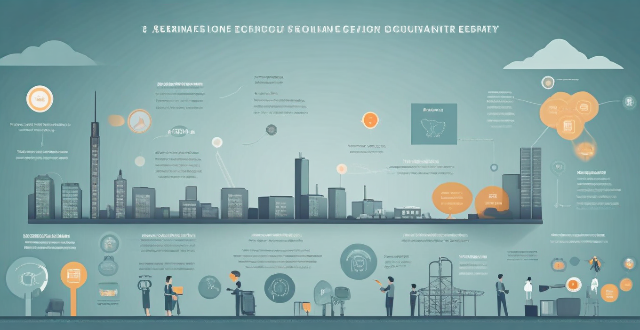
How can climate services support policy making for climate change ?
Climate services support policy making for climate change by providing scientific evidence, assessing impacts and risks, informing mitigation strategies, enhancing capacity building, and facilitating international cooperation. They provide decision-makers with relevant, timely, and reliable information on the state of the climate system, its variability, and its future projections. This information is essential for developing effective policies to mitigate and adapt to the impacts of climate change.

How has social media influenced the way awards are perceived and received ?
Social media has significantly transformed the way awards are perceived and received in today's digital age. The following discussion delves into various aspects of this influence: 1. **Increased Visibility and Awareness**: Awards ceremonies and announcements are now widely shared on social media platforms, making them instantly accessible to a global audience. Award events often become trending topics on social media, generating buzz and engaging users in discussions about nominees and winners. 2. **Enhanced Interactivity**: During award shows, viewers can participate in live polls, commentaries, and Q&A sessions, fostering a sense of community and interactivity around the event. Fans use social media to express their excitement or disappointment about results, creating a dialogue that extends beyond the official ceremony boundaries. 3. **Impact on Award Value and Legitimacy**: Some argue that with the rise of social media sentiment, awards may be perceived more as measures of popularity rather than merit, affecting their prestige and integrity. Nominees and their teams often launch extensive social media campaigns to garner support, which can influence voters and the overall perception of the award's legitimacy. 4. **Changes in Nomination and Voting Processes**: Many awards have incorporated online voting systems, allowing a broader base of fans to participate directly in the decision-making process. Social media provides a platform for organizers to transparently share nomination criteria and voting processes, making these practices more accessible to the general public. 5. **Altering Recognition and Celebration**: Winners can immediately celebrate their achievements on social media, sharing the news with their followers and receiving immediate congratulations and recognition. Winners often use social media to share personal stories and behind-the-scenes content related to their award, offering a more intimate look at their journey and achievement. In conclusion, social media has not only amplified the voice of awards but has also reshaped the way they are perceived and received by making them more interactive, accessible, and immediate. However, it has also raised questions about the balance between public opinion and expert judgment in awarding accolades. As we continue to embrace the digital age, the relationship between social media and awards will likely evolve further, shaping the future of how we confer and perceive recognition in various fields.

How can we involve marginalized communities in climate decision-making processes ?
Involving marginalized communities in climate decision-making is crucial for equitable solutions. Identify and engage these communities, build trust, provide info & resources, incorporate local knowledge, ensure participation, address power imbalances, and monitor progress.

What are the benefits of swimming for overall health and fitness ?
Swimming offers numerous benefits for overall health and fitness, including improved cardiovascular health, muscle strength and tone, joint mobility and flexibility, weight management, mental health, injury recovery and rehabilitation, and socialization. It is a low-impact, high-intensity workout that engages all major muscle groups in the body, making it an effective way to build strength and tone muscles without putting undue stress on the joints. Additionally, the buoyancy of water helps to reduce pressure on the joints, making swimming an ideal exercise for people with arthritis or other joint issues. Swimming also burns a significant number of calories, making it an effective way to manage weight. The rhythmic nature of swimming can be meditative, helping to clear the mind and promote relaxation. Overall, swimming is a great way to improve overall health and fitness.

How can we balance economic growth with climate decision-making ?
Achieving a balance between economic growth and climate decision-making is crucial for the sustainable development of our planet. This requires a multifaceted approach that involves government policies, business strategies, and individual actions. Here are some ways to achieve this balance: 1. Government Policies: - Implementing Green Taxes: Governments can introduce green taxes on carbon-intensive activities to encourage businesses and individuals to adopt more environmentally friendly practices. - Promoting Renewable Energy: Governments can provide incentives for the use of renewable energy sources such as solar, wind, and hydropower. - Regulating Emissions: Governments can set limits on emissions from industries and enforce strict penalties for non-compliance. 2. Business Strategies: - Sustainable Business Models: Companies can adopt sustainable business models that prioritize environmental sustainability alongside profitability. - Investing in Clean Technology: Businesses can invest in research and development of clean technologies that reduce their environmental impact. - Corporate Social Responsibility (CSR): Companies can incorporate CSR initiatives into their operations, such as supporting local communities affected by climate change or participating in reforestation projects. 3. Individual Actions: - Reducing Carbon Footprint: Individuals can make lifestyle changes to reduce their carbon footprint, such as using public transportation, eating less meat, and purchasing eco-friendly products. - Supporting Green Initiatives: Consumers can support companies and organizations that prioritize environmental sustainability by choosing their products and services over those of less eco-friendly competitors. - Advocating for Policy Changes: Individuals can advocate for policy changes at the local, national, and international levels to promote climate action and protect the environment. In conclusion, balancing economic growth with climate decision-making requires a collaborative effort from governments, businesses, and individuals. By implementing sustainable policies, adopting eco-friendly practices, and making conscious choices as consumers, we can work towards a more sustainable future for our planet.

What are the benefits of using a virtual private network (VPN) for online privacy ?
The text discusses the benefits of using a Virtual Private Network (VPN) for online privacy. It highlights five key benefits: encryption and security, anonymity and privacy, unrestricted access to content, protecting personal information, and avoiding bandwidth throttling. The text explains that a VPN encrypts internet traffic, making it difficult for hackers or third parties to intercept data. It also masks the user's IP address and physical location, making it harder for websites and advertisers to track online activities. Additionally, a VPN can bypass geo-restrictions and censorship, allowing users to access blocked content. Finally, a VPN can protect personal information from being leaked or stolen and prevent ISPs from throttling bandwidth. Overall, using a VPN can provide several benefits for online privacy.
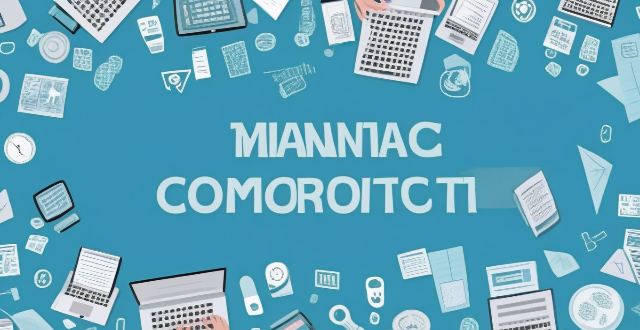
What are the benefits of using mobile communication technology in businesses ?
The text discusses the advantages of utilizing mobile communication technology in business operations. The key benefits include increased mobility and flexibility for employees, improved communication and collaboration among team members, enhanced customer engagement through various platforms, greater efficiency and productivity due to automation and streamlining processes, cost savings by reducing reliance on traditional office spaces, better data collection and analysis for informed decision-making, and improved access to information for employees. These advantages contribute to making businesses more competitive and adaptable to the evolving needs of customers and employees.